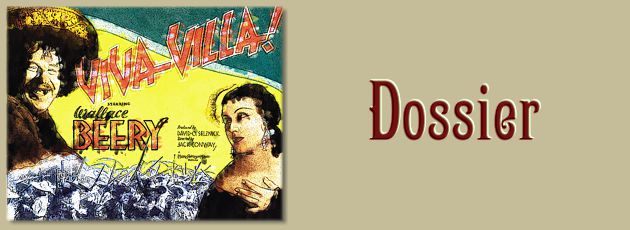
A Lost Opportunity: Carlos Fuentes, the Essay, and Mexico in English
Mauricio Tenorio Trillo, University of Chicago
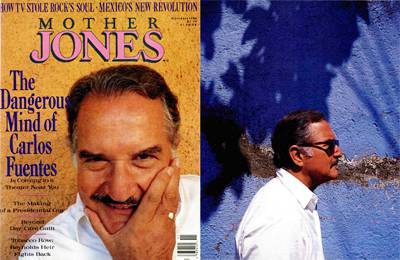 In the late 1950s, Emma Speratti, an Argentine philologist, a student of María Rosa and Raimundo Lida and of the late Pedro Henríquez Ureña, saw it with an uncanny clairvoyance. She welcomed Carlos Fuentes’s La region más transparente, but criticized its “procedimientos reiterativos” (redundant procedures), its obsessive search for images, its stereotyping of the popular parlance of Mexico City and Buenos Aires, and its moments, as it were, of gaudiness. But she wrote to Fuentes: “Despite these faults, I think yours is a good novel. At least it is a novel and not a movie script. It will easily reach beyond the Mexican borders… And with this my complements end. Otros te echarán el incienso. Ojalá no te maree.” (Others will burn for you incense. I hope you don’t get dizzy).(1) And beyond Mexico the novel reached indeed, and Fuentes became addicted to that incense. Inevitably, se mareó, who can blame him, few had his talent, few his success beyond the “Mexican borders.”
In the late 1950s, Emma Speratti, an Argentine philologist, a student of María Rosa and Raimundo Lida and of the late Pedro Henríquez Ureña, saw it with an uncanny clairvoyance. She welcomed Carlos Fuentes’s La region más transparente, but criticized its “procedimientos reiterativos” (redundant procedures), its obsessive search for images, its stereotyping of the popular parlance of Mexico City and Buenos Aires, and its moments, as it were, of gaudiness. But she wrote to Fuentes: “Despite these faults, I think yours is a good novel. At least it is a novel and not a movie script. It will easily reach beyond the Mexican borders… And with this my complements end. Otros te echarán el incienso. Ojalá no te maree.” (Others will burn for you incense. I hope you don’t get dizzy).(1) And beyond Mexico the novel reached indeed, and Fuentes became addicted to that incense. Inevitably, se mareó, who can blame him, few had his talent, few his success beyond the “Mexican borders.”
Carlos Fuentes as the per-excellence expression of the Mexico for consumption in English intrigues me. To be honest, my concern is more with changing the lasting image of Mexico in English than with Fuentes’s work, but in this endeavor don Carlos becomes unavoidable. I want, however, for my words not to sound disrespectful or ungrateful. As Maarten van Delden has lucidly shown, in the late 1950s, young Carlos Fuentes became an indispensable douse of cosmopolitism, experimentation, and courage for the ossified culture of Mexico’s revolutionary nationalism.(2) But his greatest challenge, paradoxically, was his early domestic and international success. He kept experimenting, at least for a while, in the structure of novels and language and, as all writers, he gradually developed a set of main preoccupations to which he always returned. And yet, he had learned the secret of success with the Mexico branding and endured in the marketing.
I do not wish to offer any insight on the literary value of Carlos Fuentes’ works; I am merely talking of his role as an internationally recognized essay-writer, an essayist of and on Mexico. I want to examine his fulfilling of the international niche of the cultural market known as Mexico. Like all Mexicans, I lament his recent departure. I am one of those Mexicans who learned to write and think in Spanish with Fuentes, Octavio Paz, and Carlos Monsiváis as omnipresent masters, and without them I feel, as the popular saying goes, “nomás queda el puro olote.” I fear ingratitude, thus I leave no doubt whatsoever of my recognition and respect for Carlos Fuentes. But leave time to do what it always does: cut us all down to size. Let don Carlos rest in as much peace as that which should prevail for the lasting model of the intellectual dealer of things Mexicans in English that he was.
Whether Fuentes did a good or a bad job being, together with Paz and maybe Jorge Castañeda and Enrique Krauze, Mexico’s cultural voice for the English-speaking world over the 20th century, is not vital for reconsidering the cultural commodity Mexico. I believe the very need of such kind, of such only voice that sells Mexico to larger audiences in English, ought to be retired. The key for a real reconceptualization of Mexico in the world is not in one Fuentes or another, but in the overcoming of the mechanism: Mexico as fixed exotic idea is demanded by the world, one or two Fuentes are more than enough to satisfy such a demand; the knowledge of the supply (Mexico) is necessary, as much as the command of the demand (especially the U.S.). The Fuentes-like model of the world prestigious Mexican intellectual is the wise dealer who knows his or her market, and delivers the merchandize his or her client demands. Useless is to ask the Mexican intellectual to fight the laws of the market, the tempting claws of fame and money.
But this is a hard task: not only because it is thorny to pronounce “Mexico” in English outside the connotations implied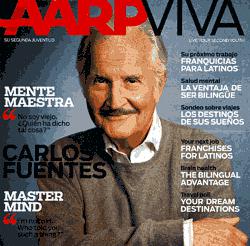 by the lasting Fuentes-like Mexico de exportación, but also because, being Mexican, one is expected to speak like a local, that is, like a real Mexican, and so we come full circle to the Fuentes temptation. Fortunately, such prominent younger Mexican writers as Jorge Volpi have been recently honoring Fuentes by declaring the Fuentes intellectual model irreproducible in today’s global circulation of ideas. The circumstances have changed so much, in Mexico, the so-called Latin America and the world, Volpi explains, that the model of intellectual a la Vargas Llosa or a la Fuentes is over.
by the lasting Fuentes-like Mexico de exportación, but also because, being Mexican, one is expected to speak like a local, that is, like a real Mexican, and so we come full circle to the Fuentes temptation. Fortunately, such prominent younger Mexican writers as Jorge Volpi have been recently honoring Fuentes by declaring the Fuentes intellectual model irreproducible in today’s global circulation of ideas. The circumstances have changed so much, in Mexico, the so-called Latin America and the world, Volpi explains, that the model of intellectual a la Vargas Llosa or a la Fuentes is over.
In a late essay, Fuentes wrote –in his characteristic blend of “I decree” and Wittgensteinian aphorism: “Introducción del ser histórico en la historia. Introducción de una civilización en otra. Ello requerirá una aguda conciencia de nuestra propia tradición a fin de darle la mano a las tradiciones de los otros. ¿Qué une a toda tradición sino ser requisito para construir, sobre ella, una nueva creación? Tal es el problema que resuelven, con brillo, nuevos novelistas mexicanos como Jorge Volpi, Ignacio Padilla y Pedro Ángel Palou.”(3) Whether this was the enigma and they the solution is not for me to say. I highlight simply the attempt at the passing of the baton, for, like my honorable friend Jorge Volpi, I do believe that circumstances have radically changed in Mexico and the world, but not so much in what have to do with the role of the successful Mexican intellectual, his or her marriage of mutual convenience with the state, and the foreign demand for things Mexican. In fact, I would say that over the last democratic decade things 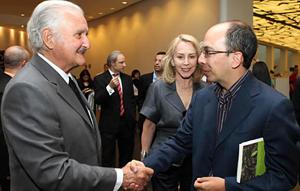 between the trio –successful intellectuals, Mexican state, and international consumption of Mexican culture– remained unchanged except for a new addition favorable in effect to the Fuentes-like mechanism in locating Mexico in the world. I am thinking of all sorts of media as a source of money and fame, and the growing monopolistic trend in the book markets and its corollary, the literary agent. Let me put in this way, with all due respect to my friend, a younger writer as Volpi has not had a very different trajectory than Fuentes: worked for the state until very recently,(4) sponsored by state becas and awards, became national patrimony through prizes granted by huge cultural corporations through a literary agent. Indeed, the kind of demand for things Mexicans have not changed much, and neither has the mechanism to supply such demand. That is why, Volpi´s auspicious end of the Fuentes-style Mexican intellectual is not a factual statement; it is an announcement: “I’m next, I accept the baton.”
between the trio –successful intellectuals, Mexican state, and international consumption of Mexican culture– remained unchanged except for a new addition favorable in effect to the Fuentes-like mechanism in locating Mexico in the world. I am thinking of all sorts of media as a source of money and fame, and the growing monopolistic trend in the book markets and its corollary, the literary agent. Let me put in this way, with all due respect to my friend, a younger writer as Volpi has not had a very different trajectory than Fuentes: worked for the state until very recently,(4) sponsored by state becas and awards, became national patrimony through prizes granted by huge cultural corporations through a literary agent. Indeed, the kind of demand for things Mexicans have not changed much, and neither has the mechanism to supply such demand. That is why, Volpi´s auspicious end of the Fuentes-style Mexican intellectual is not a factual statement; it is an announcement: “I’m next, I accept the baton.”
To be sure, the same could be said of the well-know 1980s brawl that, comme il fault, took place in English, between Carlos Fuentes and Enrique Krauze: among many other domestic things, the debate aimed to disqualify Fuentes as unMexican so as to appoint someone else as the good source of things Mexican in English. Whether either Krauze or Volpi will become the new Fuentes will have less to do either with the quality of their work or with their authenticity as Mexicans; it will depend more on their command of the English-speaking word. In that Fuentes has been unmatched. But, Fuentes gone, the competition is open, we will see Krauze or Castañeda or Volpi in the pages of The New York Review of Books, of The New York Times, in all sorts of documentaries and TV programs, speaking about, well, you name it: the narco, the Mexican novel, Los Tigres del Norte, or sex, or the PRI, or bullfights, or love, or soccer. Let the best win. The real victory would be elsewhere: in not needing such kind of intellectual.
Fuentes won much prestigious recognition, but the Nobel Prize escaped him, though for the last decades many expected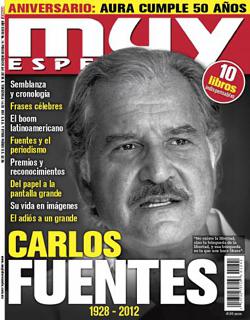 that he would get it sooner or later. I happen to have had a business meeting with the then CONACULTA director, Consuelo Zaizar, the day after Vargas Llosa’s Nobel Prize was announced. She told me of all “they” (I suppose she meant the government or the Mexican publishing industry) have done to get that for Fuentes, though she also mentioned Fernando del Paso and José Emilio Pacheco. But Fuentes’ international visibility made him the frontrunner in the race for a Mexico’s second Nobel Prize in literature. Of course I kept my mouth shut, not because I found Fuentes undeserving of such a prize, but because I have witnessed in my lifetime five Nobel Prize winners from the literature in my language (Neruda, García Márquez, Paz, Celá, and Vargas Llosa), and I think neither my language nor Fuentes have been damaged by the decisions. Fuentes, after all, without a Nobel Prize, was certainly the best-paid and most sought-after Mexican speaker in the whole world especially in major U.S. universities.
that he would get it sooner or later. I happen to have had a business meeting with the then CONACULTA director, Consuelo Zaizar, the day after Vargas Llosa’s Nobel Prize was announced. She told me of all “they” (I suppose she meant the government or the Mexican publishing industry) have done to get that for Fuentes, though she also mentioned Fernando del Paso and José Emilio Pacheco. But Fuentes’ international visibility made him the frontrunner in the race for a Mexico’s second Nobel Prize in literature. Of course I kept my mouth shut, not because I found Fuentes undeserving of such a prize, but because I have witnessed in my lifetime five Nobel Prize winners from the literature in my language (Neruda, García Márquez, Paz, Celá, and Vargas Llosa), and I think neither my language nor Fuentes have been damaged by the decisions. Fuentes, after all, without a Nobel Prize, was certainly the best-paid and most sought-after Mexican speaker in the whole world especially in major U.S. universities.
As my way of honoring him, I have read or re-read all of Carlos Fuentes’ non fictional prose. I read thus his various essays originally written in English or translated into English, for he, Alma Guillermoprieto, and Jorge Castañeda are the only major Mexican intellectuals who I know for certain write essays directly in English. The first thing that caught my attention in this single reading of a total essayism was the recurrence of a topic: his own discovery of Mexico, of Spanish, as he was educated in English until age 12, and lived in many countries before settling in Mexico. Do not get me wrong, I care a rat’s tale about Fuentes’ or anybody else’s real Mexicanness, but time and time again he spoke of this discovery which was reincarnated in many forms: the moving description of the powers of his own language, his search of identity, the Mexican revolution as Mexico’s reencounter with itself, the discovery of deep-rooted traditions that needed to be reenacted.
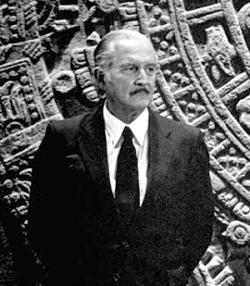 The self-discovery, to be sure, was part of the U.S. discovery of the Mexican Revolution. Its first U.S. interpreter, Frank Tannenbaum, had written in the 1930s: “The principal product of the Revolution … is spiritual; a discovery by the Mexican people of their own dignity, a dignity which they wee not conscious of possessing before and which was not credited to them even by the philosophers drawn from their midst.”(5) This was Fuentes self-discovery, the import of his own decision to become a Mexican writer, which he cast in the same tenor as Pessoa’s or Borges’s choice of Portuguese and Spanish respectively (they both could have been writers in English). As Fuentes himself put it: “the English language after all, did not need another writer.”(6) One ought to assume that, in his view, the Spanish language was in desperate need of another writer. And God said: let there be Fuentes, and he saw that Carlos was good. As late as 1991, in The Orange Tree, he returned to the discovery topic, though a fictional Jerónimo de Aguilar –one of the Spanish survivors of a shipwreck who Cortés
The self-discovery, to be sure, was part of the U.S. discovery of the Mexican Revolution. Its first U.S. interpreter, Frank Tannenbaum, had written in the 1930s: “The principal product of the Revolution … is spiritual; a discovery by the Mexican people of their own dignity, a dignity which they wee not conscious of possessing before and which was not credited to them even by the philosophers drawn from their midst.”(5) This was Fuentes self-discovery, the import of his own decision to become a Mexican writer, which he cast in the same tenor as Pessoa’s or Borges’s choice of Portuguese and Spanish respectively (they both could have been writers in English). As Fuentes himself put it: “the English language after all, did not need another writer.”(6) One ought to assume that, in his view, the Spanish language was in desperate need of another writer. And God said: let there be Fuentes, and he saw that Carlos was good. As late as 1991, in The Orange Tree, he returned to the discovery topic, though a fictional Jerónimo de Aguilar –one of the Spanish survivors of a shipwreck who Cortés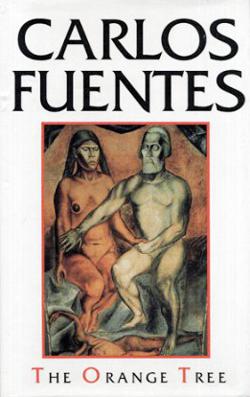 found upon his arrival in Yucatán. Seen in the continuum of Fuentes’ essayism, Jerónimo works as his alter ego lost in the midst of unbounded stereotypes. Jerónimo talking: “I mean to say that I speak Spanish. It’s time to confess that I had to relearn it because after eight years among the Indians I lost it. Now with Cortes’s troops I rediscovered my own language, the one that flowed toward my lips from my Castilian mother’s breast. And I quickly learned Mexican, so I could speak to the Aztecs.” Which is as learning Latin to speak with the Latin Americans, but to be sure this is a minor literary license, understandable for a writer who is merely “ringing bells” for stereotypical views of Mexico, a search completed masterfully by the end of Jerónimo’s monologue: “but the La Malinche was always ahead of me.” (7)
found upon his arrival in Yucatán. Seen in the continuum of Fuentes’ essayism, Jerónimo works as his alter ego lost in the midst of unbounded stereotypes. Jerónimo talking: “I mean to say that I speak Spanish. It’s time to confess that I had to relearn it because after eight years among the Indians I lost it. Now with Cortes’s troops I rediscovered my own language, the one that flowed toward my lips from my Castilian mother’s breast. And I quickly learned Mexican, so I could speak to the Aztecs.” Which is as learning Latin to speak with the Latin Americans, but to be sure this is a minor literary license, understandable for a writer who is merely “ringing bells” for stereotypical views of Mexico, a search completed masterfully by the end of Jerónimo’s monologue: “but the La Malinche was always ahead of me.” (7)
Also in a fictional Martín Cortés –local son of the conqueror– once more Fuentes returns to the discovery as a leitmotiv, again playing the notes the world often wants to hear coming from Mexico, but this time around sandwiching the self-discovery between a sort Saturnino Herrán’s mestizos and an INEGI report(8): “I bless you, my mother [Malinche], I thank you for my dark skin, my liquid eyes, my heir like my father’s horse’s mane, my bare pubis, my short height… my face lost amid the dark skinned human tide, subjected as I am the majority.”(9) The statistical conclusion re-locates the speech in resignation: I’m okay with the local, the real, the authentic. The recurrent topic of the self-discovery was a wonderful resource to rhetorically inhabit both a zoom-out cosmopolitism and a zoom-in localism. For the discovery implies a cosmopolitan viewer who time and time again found or re-found himself Mexican, local. In Fuentes such self-discovery became often the proof of his profound cosmopolitanism. Having read Borges’ essays, he knew that an Arabian writer needed not to write about camels. And yet, Fuentes talked about many Mexican camels, not because he was not Mexican enough –whatever that may be–, but because his camels meant to be no-camels just because they have been touched by his cosmopolitan discovery/self-discovery magic. But camels they were, “memez quintaesenciada,” as Josep Pla would have put it. Or so they look like to me in a 21st century rereading.
Another important recurrence in Fuentes’ essay is la question américaine, often overlapping with la question latinaméricaine. From the 1960s to the 1980s, he often spoke, in U.S. venues, to U.S. citizens, in English, about the evilness of American imperialism; of the need of a Mexican, and thus by cultural decree, Latin American revolution in view of U.S. fascism. That is the way he spoke until the late 1970s, because for him Kennedy or Nixon made no difference, they were Mussolini and Hitler or the other way around, I do not recall. These opinions were mere epochal sins, one might conclude; the 1960s spoke through him. Indeed, with time, he distanced himself from any gross oversimplification of the U.S. in his essays, and began talking of a democratic U.S., of progressive Americans who were natural allies of Latin American causes. In his latest essays he even spoke multikulti and identity politics a la américaine and left behind the need of the violent, anti-American, revolution. Gott ist schön as my friend Navid Kermani’s book title reads (2000), and allowed Fuentes enough life to change his mind –which God did not grant to Fuentes’ friend, C. Wright Mills, “the true voice of North America, friend and companion of the struggle of Latin America,” as Fuentes wrote in the dedication of La muerte de Artemio Cruz. Mills furnished Fuentes with the proofs of American fascism in the alliance of corrupt politicians, old oligarchs, big new corporations, and the industrial military complex. Mills died young in 1962, having published Listen, Yankee: The Revolution in Cuba (1960), a sociological and ethnological study of the Cuban revolution he wrote after talking with many Cubans, though he did not speak Spanish –nor German, though he published influential translations of Max Weber.
 Mill’s Manichean view of the U.S. was very close to Fuentes until the late 1970s; he wrote an essay on Mills, which he never again included in subsequent editions of his essays. I happen to believe that Mills’ ideas are less revealing and insightful than their reception in Spanish-speaking radical circles and in people like Fuentes. As a low-class Texan, Mills was an outsider in the radical intellectual circles of New York. His radicalism had more to do with his personal dilemmas vis-à-vis the intellectual aristocracy –Richard Hofstadter, Daniel Bell, Talcott Parsons, Lionel Trilling– than with his actual empirical knowledge of the functioning of American imperialism. In fact, his popularity in Spanish –thanks to Fuentes’ efforts to publish Mills’s works in the Fondo de Cultura Económica– mirrored the Fuentes effect in the English-speaking world. Mills’ U.S. vis-à-vis Spanish-speaking anti-Americanism is similar to Fuentes’ Mexico vis-à-vis American radicals. They both provided what their clients wanted to hear, Mills until he died, Fuentes always –he changed his mind on time, often and strategically.
Mill’s Manichean view of the U.S. was very close to Fuentes until the late 1970s; he wrote an essay on Mills, which he never again included in subsequent editions of his essays. I happen to believe that Mills’ ideas are less revealing and insightful than their reception in Spanish-speaking radical circles and in people like Fuentes. As a low-class Texan, Mills was an outsider in the radical intellectual circles of New York. His radicalism had more to do with his personal dilemmas vis-à-vis the intellectual aristocracy –Richard Hofstadter, Daniel Bell, Talcott Parsons, Lionel Trilling– than with his actual empirical knowledge of the functioning of American imperialism. In fact, his popularity in Spanish –thanks to Fuentes’ efforts to publish Mills’s works in the Fondo de Cultura Económica– mirrored the Fuentes effect in the English-speaking world. Mills’ U.S. vis-à-vis Spanish-speaking anti-Americanism is similar to Fuentes’ Mexico vis-à-vis American radicals. They both provided what their clients wanted to hear, Mills until he died, Fuentes always –he changed his mind on time, often and strategically.
Discussions about Max Weber, Mills, his collaborator, German exiled sociologist H. H. Guerth, and Parsons run into a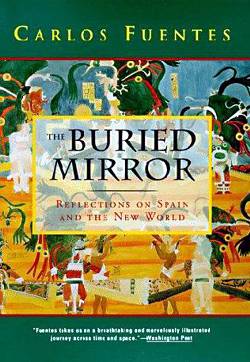 common counterfactual interrogation: what if Weber had lived to see the emergence of Nazism? Would he, the theoretician of Charisma against the iron-cage of bureaucracy and of the patrimonial spirit of traditional masses, have become an ideologue of Nazism? Impossible to know. But would Mills had lived more than his forty and something years, would he have become Chomsky or Vargas Llosa in his view of the U.S. and Latin America? Would he have become disenchanted, as 1980s Fuentes became, with the Cuban revolution? Hard to say. Having studied Mill’s personal papers and works, I can say that he just did not have Fuentes’ smoothness, intellectual sense to sniff out, rapidly, new trends so as to survive the stink of disenchantment. Mills was visceral, tiger-like in his own personal life. He was not Fuentes, and his intellectual milieu was not Mexico. His reputation would have been seriously damaged, in a way that no change of heart can affect any major Mexican intellectual. Carlos Fuentes died Carlos Fuentes, Jorge Castañeda is Jorge Castañeda and Héctor Aguilar Camín is Héctor Aguilar Camín. Nothing happens. Here Carlos Vaz Ferreira’s maxim applied but never has in the Mexican domains: “Es cierto […] tiene Ud. y tienen todos los hombres […] el elevadísimo y noble deber de cambiar de opiniones. Sólo que cuando se dé […] la casualidad de que ese cambio coincide con la conveniencia personal, entonces todo se arregla cumpliendo otro deber complementario –fácil, inferior—un simple derecho sin importancia: renunciar a sacar provecho del cambio.”(10) Again, I am merely talking of Fuentes’ essay, and in no way am I denying his importance in Mexican letters, much less his talent. I, however, found disturbing that, being so keen to the nuances of the cultural and political life in the U.S., he rarely spoke, in Spanish or English, about the U.S. itself, with all its cochinadas and all of its complexity. He did speak often about Faulkner –in a rather stereotypical fashion as a sort of the more Latin American of the American writers for, as a Southern, he knew about tragedy and failure. That is what in the 1920s Katherine Ann Porter, a southerner, wrote about herself and her fascination with Mexico. In a later installment (2000s) of the Faulkner essay –This I believe—Fuentes included a word he did not mentioned in his first essay on Faulkner: racism, Faulkner’s racism. After all, ever since James Baldwin’s 1962 masterful and devastating essay the literature on Faulkner could not avoid mentioning Faulkner’s sense of offense in relation to the outside world for it having forced his southern world to change so rapidly and drastically; if only the South had been allowed to change at his own pace, segregation would have disappeared without the tragedy it brought to his world. A criticism that does not makes Faulkner a better or worst writer, but does makes Fuentes’ later essay’s mention of Faulkner’s peccadillo a sign of what Fuentes always was: Hugo Sánchez, excelente rematador de bolea. His essays are a constant fine adjusting according to the direction of the good, progressive, winds. That is why his essays had an instantaneous impact. Nevertheless, the passing of time cores them tremendously.
common counterfactual interrogation: what if Weber had lived to see the emergence of Nazism? Would he, the theoretician of Charisma against the iron-cage of bureaucracy and of the patrimonial spirit of traditional masses, have become an ideologue of Nazism? Impossible to know. But would Mills had lived more than his forty and something years, would he have become Chomsky or Vargas Llosa in his view of the U.S. and Latin America? Would he have become disenchanted, as 1980s Fuentes became, with the Cuban revolution? Hard to say. Having studied Mill’s personal papers and works, I can say that he just did not have Fuentes’ smoothness, intellectual sense to sniff out, rapidly, new trends so as to survive the stink of disenchantment. Mills was visceral, tiger-like in his own personal life. He was not Fuentes, and his intellectual milieu was not Mexico. His reputation would have been seriously damaged, in a way that no change of heart can affect any major Mexican intellectual. Carlos Fuentes died Carlos Fuentes, Jorge Castañeda is Jorge Castañeda and Héctor Aguilar Camín is Héctor Aguilar Camín. Nothing happens. Here Carlos Vaz Ferreira’s maxim applied but never has in the Mexican domains: “Es cierto […] tiene Ud. y tienen todos los hombres […] el elevadísimo y noble deber de cambiar de opiniones. Sólo que cuando se dé […] la casualidad de que ese cambio coincide con la conveniencia personal, entonces todo se arregla cumpliendo otro deber complementario –fácil, inferior—un simple derecho sin importancia: renunciar a sacar provecho del cambio.”(10) Again, I am merely talking of Fuentes’ essay, and in no way am I denying his importance in Mexican letters, much less his talent. I, however, found disturbing that, being so keen to the nuances of the cultural and political life in the U.S., he rarely spoke, in Spanish or English, about the U.S. itself, with all its cochinadas and all of its complexity. He did speak often about Faulkner –in a rather stereotypical fashion as a sort of the more Latin American of the American writers for, as a Southern, he knew about tragedy and failure. That is what in the 1920s Katherine Ann Porter, a southerner, wrote about herself and her fascination with Mexico. In a later installment (2000s) of the Faulkner essay –This I believe—Fuentes included a word he did not mentioned in his first essay on Faulkner: racism, Faulkner’s racism. After all, ever since James Baldwin’s 1962 masterful and devastating essay the literature on Faulkner could not avoid mentioning Faulkner’s sense of offense in relation to the outside world for it having forced his southern world to change so rapidly and drastically; if only the South had been allowed to change at his own pace, segregation would have disappeared without the tragedy it brought to his world. A criticism that does not makes Faulkner a better or worst writer, but does makes Fuentes’ later essay’s mention of Faulkner’s peccadillo a sign of what Fuentes always was: Hugo Sánchez, excelente rematador de bolea. His essays are a constant fine adjusting according to the direction of the good, progressive, winds. That is why his essays had an instantaneous impact. Nevertheless, the passing of time cores them tremendously.
Fuentes did write essays about his friend Arthur Miller as well as about U.S. intellectuals who matched his view of two civilizational ontologies: the Latin, Catholic, communitarian, oriented toward the past, and the Protestant, Nordic (sic), Anglo Saxon, individualistic, future-facing. Thus his essays’ common use of C. Wright Mills’ ideas, or his prizing of Hemingway as his alter-ego, the eternal macho, vanguard, and always ahead of the game in the English language.
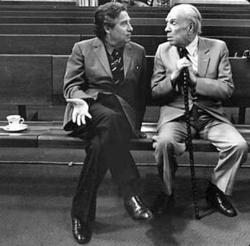 As a point of contrast, we have El laberinto de la soledad. One cannot re-read this synthesis of decades of stereotyping and new psycho-historical perspectives on the U.S. and Mexico with the same sense of astonishment a 1950s reader must have experienced. But Paz’s seduction of his reader did not stem from his knowledge of the U.S. but from his capability of deeply explaining and exercising an epochal commonsense. Fuentes knew the U.S. better, spoke the language as a native, and yet adopted a strategy of seduction similar to Paz’s, alas decades after Paz. Paz was, as Jean Maria Castellet saw him in the 1960s, a conviction made of “timidesa” and “voluntat de seducció” meant to “cercar l’originalitat i la diferència per tal de dur-te al seu terreny, encara que sigui per discutir, després, a basement.”(11) And Paz’s terrain was not the U.S., he did not know it, he did not speak the language fluently. Indeed, this is the point: Fuentes could have been Mexico’s teacher of U.S. things. He had no timidesa and he had the knowledge. He chose to use it to give to U.S. readers what they demanded and to make us, Mexicans, feel happier in our conventional anti-American comfort zone. Fuentes’ essayism, thus, constitutes a lost cultural opportunity, as Paz did not. Fuentes spoke of what the U.S. was neither to Americans nor to Mexicans. He told Mexicans what mainstream Mexican nationalism wanted to hear about the U.S., while delivering to U.S. progressivism what it already agreed with. But about the U.S. he knew, that is shown by his topics, by his emphases, his syntax, and his excellent handling of his intellectual persona in U.S. literary markets.
As a point of contrast, we have El laberinto de la soledad. One cannot re-read this synthesis of decades of stereotyping and new psycho-historical perspectives on the U.S. and Mexico with the same sense of astonishment a 1950s reader must have experienced. But Paz’s seduction of his reader did not stem from his knowledge of the U.S. but from his capability of deeply explaining and exercising an epochal commonsense. Fuentes knew the U.S. better, spoke the language as a native, and yet adopted a strategy of seduction similar to Paz’s, alas decades after Paz. Paz was, as Jean Maria Castellet saw him in the 1960s, a conviction made of “timidesa” and “voluntat de seducció” meant to “cercar l’originalitat i la diferència per tal de dur-te al seu terreny, encara que sigui per discutir, després, a basement.”(11) And Paz’s terrain was not the U.S., he did not know it, he did not speak the language fluently. Indeed, this is the point: Fuentes could have been Mexico’s teacher of U.S. things. He had no timidesa and he had the knowledge. He chose to use it to give to U.S. readers what they demanded and to make us, Mexicans, feel happier in our conventional anti-American comfort zone. Fuentes’ essayism, thus, constitutes a lost cultural opportunity, as Paz did not. Fuentes spoke of what the U.S. was neither to Americans nor to Mexicans. He told Mexicans what mainstream Mexican nationalism wanted to hear about the U.S., while delivering to U.S. progressivism what it already agreed with. But about the U.S. he knew, that is shown by his topics, by his emphases, his syntax, and his excellent handling of his intellectual persona in U.S. literary markets.
Fuentes’ essay corpus, in what regards to Mexico’s images in the world and the knowledge of the U.S. in Mexico, was thus a lost opportunity. But perhaps not only because of his early success, as I have said, but also because of his peculiar disservice of the essay as a genre. I think his essays had an immediate but not a lasting power of seduction or provocation. Even though they were rhetorically ambitious, their language did not withstand the test of time, which have made all the more visible their common use of overdone images and tricks, their uncontrollable and hyperbolic list of adjectives, their aphoristic cult of clichés. Allow me to be opinionated: the essays clearly show a frustrated will to be Montaigne or Ortega but Fuentes never quite got there. He never reached the rhetorical beauty, the irony, the provocative deepness –all natural gifts of the essay as genre– of Hazlitt, Emerson, H.M. Menken or Larra, Ortega, Paz or Cuesta, but he could deliver well in two languages. That was his great advantage. This could be the mere opinion of a wannabe essayist, but if I were to call as witnesses of my unqualified opinion the insightful ruminations about the essay by Adorno, Lukács, Musil or for that matter Montaigne, I would solidly rest my case, believe me. For great novelists not necessary make great essay writers. The Musil-like complexity of the essay, the multiverse nature of the genre, its conceptual and narrative logic and beauty, its experimental thinking, its aphoristic provocations, are the measure. Fuentes’s pieces, in my view, were component, not remarkable, not memorable, examples; but he could essay in two languages.
In both he lacked irony, above all self-irony and was wanting in depth: the essay was his way of dealing with professional lecturing engagements, with instantaneous political controversies, he rarely engaged in the research and “ensimismamiento” that the essay requires. Fuentes’s essays were not the mirror of a mind thinking but the mirror of a mind in the mirror rapidly performing the act of thinking, too confident of his powers, not enough doubt, not enough painful doubt. At times, the essays were so rapidly produced that they became elaboration of clichés captured instantly, with his Hugo Sánchez abilities, always trying to be in tune with progressive correct thinking; essays written with an audience in mind, not enough solitude, too much search for easy and immediate applause.
The catching-up with the demands of Mexico in English and a deep concern with his image as a progressive, sexy, thinker, led him, surprisingly, to be always morally right. He seemed not to have erred.(12) Great essay writers often err fantastically, especially morally and philosophically. Yet their pieces always remain a provocation –in Spanish think of Ortega’s uncanny essays that displayed accommodation in the first years of the Franco-regime, or of Gabriel Zaid’s politically incorrect views of Central American revolutions, or his erroneous obsession with a strong Leviathan that has shown to be many things but above all extremely weak; think of Baroja’s anti-Semitism, or of the at times ugly, vulgar, anti-Americanism of Jorge Ibargüengoitia; or in other languages think of W. E. B. DuBois’s Stalinism, or of Sartre’s moralistic disqualifying of Raymond Aron. All of them were great essay writers. All of them were wrong sometimes. Some of Fuentes’s essays erred ethically and historically big time, a fact that does not reflect on the domestic or international consumption of his works. For he managed to always re-word what he had said depending on which direction the wind was blowing. A writer, like Fuentes, who supported the Cuban Revolution beyond the call of generational duty, who supported violent revolutions in the name of strong states or of a Latin
thinker, led him, surprisingly, to be always morally right. He seemed not to have erred.(12) Great essay writers often err fantastically, especially morally and philosophically. Yet their pieces always remain a provocation –in Spanish think of Ortega’s uncanny essays that displayed accommodation in the first years of the Franco-regime, or of Gabriel Zaid’s politically incorrect views of Central American revolutions, or his erroneous obsession with a strong Leviathan that has shown to be many things but above all extremely weak; think of Baroja’s anti-Semitism, or of the at times ugly, vulgar, anti-Americanism of Jorge Ibargüengoitia; or in other languages think of W. E. B. DuBois’s Stalinism, or of Sartre’s moralistic disqualifying of Raymond Aron. All of them were great essay writers. All of them were wrong sometimes. Some of Fuentes’s essays erred ethically and historically big time, a fact that does not reflect on the domestic or international consumption of his works. For he managed to always re-word what he had said depending on which direction the wind was blowing. A writer, like Fuentes, who supported the Cuban Revolution beyond the call of generational duty, who supported violent revolutions in the name of strong states or of a Latin 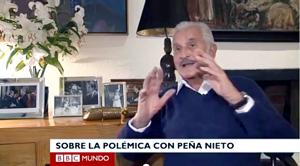 American anti-American path, or became an outspoken advocate of Luis Echeverría or of Carlos Salinas de Gortari, owed to himself and to his readers, in English and Spanish, at least a measure of self-criticism. But his peculiar use of the essay allowed him to always come out clean, like a wet fish in our hands. One day he was at the first line of lobbying for NAFTA, the next he was the critic of neoliberalism, but always the friend of Mexican or American presidents—except Nixon and Díaz Ordaz. After all, by the 1990s, he was more than them. Presidents came and went. Fuentes became Teotihuacan or the Ángel de la Independencia.
American anti-American path, or became an outspoken advocate of Luis Echeverría or of Carlos Salinas de Gortari, owed to himself and to his readers, in English and Spanish, at least a measure of self-criticism. But his peculiar use of the essay allowed him to always come out clean, like a wet fish in our hands. One day he was at the first line of lobbying for NAFTA, the next he was the critic of neoliberalism, but always the friend of Mexican or American presidents—except Nixon and Díaz Ordaz. After all, by the 1990s, he was more than them. Presidents came and went. Fuentes became Teotihuacan or the Ángel de la Independencia.
As I said before, Fuentes’s essays often border in clichés. As late as the 1990s he was still finding in stereotypes and clichés the substitute for the lack of conceptual logic and beauty the essay demand as a genre. He wrote in English: “The French equate intelligence with rational discourse, the Russian with intense social searching. For a Mexican, intelligence is inseparable from maliciousness –in this as in many other things, we are Italian: furberia, roguish slyness, and the cult of appearance.”(13) And this was not in the 1940s ethos spirit of the Laberinto de la soledad,or of Raíces do Brasil; this in the 1990s. La question américaine was not spared: “The US is a world full of cheerleaders, prize giving, singing in the rain.” Did he not realize that it was the same cheerleaders who lent their ears to the elegant Mexican in perfect English? Did he chose to ignore that it was they who asked that he proffer such scathing words about the ontological differences they had been buying into for a century, despite the obviously shared history, despite the fact that Mexico was already part and parcel of the world full of cheerleaders and vice versa?
When essayism is guided by skillful bilingual pen and nose to smell the political and cultural winds, stereotypes become a vice. Let us listen to a 1990s essay carefully crafted to satisfy stereotypes: “To be a Mexican was to identify a hunger for being,” he wrote, “a desire for dignity, rooted in many forgotten centuries and in many centuries yet to come, but rooted here and now in the instant, in the vigilant time of Mexico I later learned to understand in the stone serpent of Teotihuacan and in the polychrome angels of Oaxaca.”(14) Now listen to an 1886 U.S. traveler in Mexico (J. Hendrickson McCarty): “the Mexican character is a compound of Indian stolidity and Castilian haughtiness, with him change is slow, time has no meaning to him.”(15) Finally, listen the way a U.S. woman writer, playing with the same motifs, maximizes the narrative resources that this stereotyping had in order to achieve a 1920s modernist prose in English, filling it up with the texture of a carefully constructed exoticism: (María Concepción): “Maria Concepcion walked carefully, keeping to the middle of the white dusty road, where the maguey thorns and the treacherous curved spines of organ cactus had not gathered so profusely. She would have enjoyed resting for a moment in the dark shade by the roadside, but she had no time to waste drawing cactus needless from her feet. Juan and his chief would be waiting for their food in the damp trenches of the buried city.”(16) In English, the texture of the words –dignity, instant, vigilant time, stone serpent, polychrome angels, Oaxaca, Indian stolidity, Castilian haughtiness, María Concepción, maguey, cactus, Juan, buried city– sustain the argument, which is not to be understood but to be felt: there is no irony, no doubt, no conceptual challenge; there is only the very familiar, the all too English, beautiful truth of an alien, exotic, otherness, carefully constructed and painfully maintained over the years. This represents not an empirical or philosophical challenge, but a familiar, domestic form of ecstasy.
vice. Let us listen to a 1990s essay carefully crafted to satisfy stereotypes: “To be a Mexican was to identify a hunger for being,” he wrote, “a desire for dignity, rooted in many forgotten centuries and in many centuries yet to come, but rooted here and now in the instant, in the vigilant time of Mexico I later learned to understand in the stone serpent of Teotihuacan and in the polychrome angels of Oaxaca.”(14) Now listen to an 1886 U.S. traveler in Mexico (J. Hendrickson McCarty): “the Mexican character is a compound of Indian stolidity and Castilian haughtiness, with him change is slow, time has no meaning to him.”(15) Finally, listen the way a U.S. woman writer, playing with the same motifs, maximizes the narrative resources that this stereotyping had in order to achieve a 1920s modernist prose in English, filling it up with the texture of a carefully constructed exoticism: (María Concepción): “Maria Concepcion walked carefully, keeping to the middle of the white dusty road, where the maguey thorns and the treacherous curved spines of organ cactus had not gathered so profusely. She would have enjoyed resting for a moment in the dark shade by the roadside, but she had no time to waste drawing cactus needless from her feet. Juan and his chief would be waiting for their food in the damp trenches of the buried city.”(16) In English, the texture of the words –dignity, instant, vigilant time, stone serpent, polychrome angels, Oaxaca, Indian stolidity, Castilian haughtiness, María Concepción, maguey, cactus, Juan, buried city– sustain the argument, which is not to be understood but to be felt: there is no irony, no doubt, no conceptual challenge; there is only the very familiar, the all too English, beautiful truth of an alien, exotic, otherness, carefully constructed and painfully maintained over the years. This represents not an empirical or philosophical challenge, but a familiar, domestic form of ecstasy.
 Finally, there is, in Fuentes’ essays, a clear aphoristic will, nothing surprising, the genre orders such will, but the essay’s aphoristic will is the most vulnerable part of its anatomy. When such a will visibly fails, the result is a unique form of platitude: pompous, gaudy, bland platitude. Allow me to show this with unfair but telling reductions to mockery. In one of his last essay collections, En esto creo, Fuentes abounded in aphoristic paragraphs, such as: “El amor requiere una nube de duda contra el mal que lo acecha.” Indeed, and “Yo soy la nube gris que nubla tu camino”.(17) When one is possessed by the need to satisfy the demand for stereotypes, the essay bleeds to death through the wounds of gaudy aphorisms: “País inconcluso, México, paciente, sereno, esconde sin embargo la rabia de una esperanza demasiadas veces frustrada.” To that, my cursi Mexican mind quasi unconsciously adds: “México creo en ti como en el vértice de un juramento, tu hueles a tragedia tierra mía y sin embargo ríes demasiado, acaso porque sabes que la risa es un dolor callado.”(18) More: Fuentes’ attempts at aphoristic wisdom leads him to paragraphs of this size and this much: “Las culturas se influencian unas o otras”, full stop. And roses are red. Or “Las culturas perecen en el aislamiento y florecen en la comunicación,” full stop. Well, yes... another “memez quintaesenciada.”
Finally, there is, in Fuentes’ essays, a clear aphoristic will, nothing surprising, the genre orders such will, but the essay’s aphoristic will is the most vulnerable part of its anatomy. When such a will visibly fails, the result is a unique form of platitude: pompous, gaudy, bland platitude. Allow me to show this with unfair but telling reductions to mockery. In one of his last essay collections, En esto creo, Fuentes abounded in aphoristic paragraphs, such as: “El amor requiere una nube de duda contra el mal que lo acecha.” Indeed, and “Yo soy la nube gris que nubla tu camino”.(17) When one is possessed by the need to satisfy the demand for stereotypes, the essay bleeds to death through the wounds of gaudy aphorisms: “País inconcluso, México, paciente, sereno, esconde sin embargo la rabia de una esperanza demasiadas veces frustrada.” To that, my cursi Mexican mind quasi unconsciously adds: “México creo en ti como en el vértice de un juramento, tu hueles a tragedia tierra mía y sin embargo ríes demasiado, acaso porque sabes que la risa es un dolor callado.”(18) More: Fuentes’ attempts at aphoristic wisdom leads him to paragraphs of this size and this much: “Las culturas se influencian unas o otras”, full stop. And roses are red. Or “Las culturas perecen en el aislamiento y florecen en la comunicación,” full stop. Well, yes... another “memez quintaesenciada.”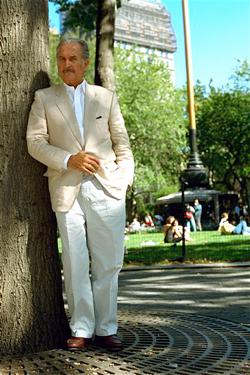 For, wisdom of the aphorism, dónde te’as metio? His last essays tried to retrace his path, but Fuentes did not go beyond the adapting of the prose to the politics and morals of the new times. He kept feeding the essay with contingent cultural fashions as if they were pollen in air, and thus his essays on globalization: “No hay globalidad que valga sin localidad que sirva”. Yes, aaaamen, let me try it: ya no habrá Fuentes que sirva con un México que valga. Not great but as bad as the former. His catching up with languages and trends did not stop at the spectrum of ugly sounding words coming from social science and NGO parlance: “En otras palabras: no hay participación global sana que no parta de gobernanza social sana.” The social scientist term, governance, becomes governanza, which sounds ugly but up-to-date. To be sure one could appreciate the experimental rhetoric of a Cristobal neonato, but in his essays Fuentes merely used the radar to catch waves de bolea in order to play with words in a caricature of essayism: (about sex) “Y luego hay las otras, nunca las demás, las damas de más, las demás damas”… Well, no más please.
For, wisdom of the aphorism, dónde te’as metio? His last essays tried to retrace his path, but Fuentes did not go beyond the adapting of the prose to the politics and morals of the new times. He kept feeding the essay with contingent cultural fashions as if they were pollen in air, and thus his essays on globalization: “No hay globalidad que valga sin localidad que sirva”. Yes, aaaamen, let me try it: ya no habrá Fuentes que sirva con un México que valga. Not great but as bad as the former. His catching up with languages and trends did not stop at the spectrum of ugly sounding words coming from social science and NGO parlance: “En otras palabras: no hay participación global sana que no parta de gobernanza social sana.” The social scientist term, governance, becomes governanza, which sounds ugly but up-to-date. To be sure one could appreciate the experimental rhetoric of a Cristobal neonato, but in his essays Fuentes merely used the radar to catch waves de bolea in order to play with words in a caricature of essayism: (about sex) “Y luego hay las otras, nunca las demás, las damas de más, las demás damas”… Well, no más please.
Spain was another of his obsessions. His essays on El Quijote were, I believe, among his best. Memorable indeed were his first takes on the modernity of Cervantes’ irony, which soon became a cliché in his own opus. And then he became a sort of Washington Irving of the Spanish New World. In The Buried Mirror – his very popular essays, originally in English, about Spain and the New World – he starts with virgins and bulls. Yes, he goes from Virgen de la Macarena to ole torero to Cervantes por bulerías: “Bullfight is also, least we forget it, an erotic event… when the young villagers learn to fight the bulls, they can do so only by night” (really?), and by sheath, perhaps crossing a river naked or a thorny field ragged, to get into the rich man’s cattle ranch, there to fight the forbidden bulls, secretly, illegally, in the darkest hours.”(19) Contemporary Spanish writers, pro or contra tauromaquía –Fernando Savater or Sánchez Ferlosio— would find this to be postcards for tourists. What about this: “por fuera del redondel, por cierto de piedras hecho, sentado llora un chiquillo… con su muletilla enjuga y sus lágrimas de torero… Toro, toro asesino ojalá y te lleve el diablo.” This is not Fuentes, it’s Lola Beltrán, but is the same essay.(20)
This could simply be not be very good essayism, not a big deal. Except that Fuentes was Fuentes; except that this has lasting consequences. I go back to the question américaine. Fuentes knew the U.S., he used it and abused it, but he never challenged it, never taught it to Mexicans. So much talking of different civilizations and ontologies, never of the very fact that his own talking, his own persona, was a proof that those were juegos de espejos, not two ontologies, but a conflictive common history: his success in English was not an accurate or original diagnosis of either the U.S. or Mexico, but the symptom of a mutual, dangerous, nonsensical, and lasting stereotyping, which he understood like few others in all its American and Mexican connotations.
The aphoristic cliché was safer: “Their past (US) is assimilated, and too often, it is simply forgotten,” really, so what about the sin of slavery and race, what about God? Ours, he affirmed, “is still battling in our souls.” “They aim to live better,” full stop. “We want to die better,” full stop. 12 million Mexican are currently in the U.S. not in order to live better but “para morir iguales” (another popular song). Modernity’s values are like water for fishes in the U.S. Mexicans are anathema to modernity. When he said “Every Latin American has a personal frontier with the U.S.”, he was logically right, for otherwise the subject of the sentence is lost: what is a Latin America but the believe in an ontological difference between the Anglo and the Latin?(21) But more insightful would have been to tells us what was the political, human, cultural advantage of reproducing such an entelechy, Latin Americans, for a Mexican who was as American as Mexican, for a country, Mexico, who is nothing but the share ugly history with the U.S., nothing but this our ugly, pero nuestra, melcocha México-estadounidense.
In sum, let us praise famous people; let us pray we need them no more.
Notes
1. Cited in Antonio Alatorre, “Emma Susana Speratti Piñero, 1919-1990,” Nueva revista de filología hispánica, v. 39, no. 2 (1991): 658.
2. Maarten van Delden, Carlos Fuentes, Mexico, and Modernity, Nashville, Vanderbilt University Press, 1998; in my view, it is the best available analysis of Fuentes’ total opus, see also his “La pura gringuez: The Essential United States in José Agustín, Carlos Fuentes, and Ricardo Aguilar Melantzón,” in Reading the United States from Mexico, ed. Linda Egan and Mary K. Long, Nashville, Vanderbilt University Press, 2009, pp. 154-176.
3. Carlos Fuentes, En esto creo, Mexico City, Seix Barral, 2002, p. 37.
4. He is now (March 2013) back in the cultural bureaucracy of the State.
5. Frank Tannenbaum, Peace by Revolution, New York, Columbia University Press, 1933, p. 181.
6. Carlos Fuentes, “How I Started to Write,” in Carlos Fuentes,Myself and the Others, New York, Farrar, Straus and Giroux, 1990, p. 83.
7. Carlos Fuentes, The Orange Tree, trad. Alfred J. Mac Adam, New York, Farrar, Straus & Giroux,1994.
8. Saturnino Herrán (1887-1918) was Mexico’s most successful painter in the early 20th-century, whose depiction of Mexican characters was very influential in the so-called Mexican artistic renaissance (1920s-1940s). INEGI (Instituto Nacional de Estadística y Geografía) is Mexico’s main official statistical agency.
9. Carlos Fuentes, The Orange Tree.
10. Caros Vaz Ferreira, Fermentario, Montevideo, Tipografía Atlántida, 1938, p. 195.
11. J. M. Castellet, Els escenaries de la memòria, Barcelona, Edicions 62, 1988.
12. See Jesús Silva Herzog Márquez, “Fuentes: escritor y personaje” (5/21/2012), http://blogjesussilvaherzogm.typepad.com/el_blog_de_jess_silva_her/2012/05/fuentes-escritor-y-personaje.html
13. Carlos Fuentes, “How I started to Write.”
15. J. Hendrickson McCarty, Two Thousand Miles Through the Heart of Mexico, New York, Phillips & Hunt, 1886.
16. K. A. Porter, The Collected Stories, New York, Harcourt, Brace and World, 1995, p. 3.
17. Popular 1940s Peruvian vals, “Nube Gris,” by Eduardo Marquez Talledo, song in Mexico by Pedro Infante.
18. Lines from the patriotic poem “Mexico creo en ti” (1940), by El Vate, Ricardo López Méndez, a poem learned by generations of Mexicans in public schools.
19. Carlos Fuentes, The Buried Mirror. Reflections on Spain and the New World, Boston, Houghton Mifflin Company, 1992.
20. Famous tune, “Huapango Torero” (1950s) by Tomás Méndez, made popular by Lola Beltrán.
21. Carlos Fuentes, Latin America: At War with the Past, Montreal, CBS Enterprises, 1985, p. 9.

